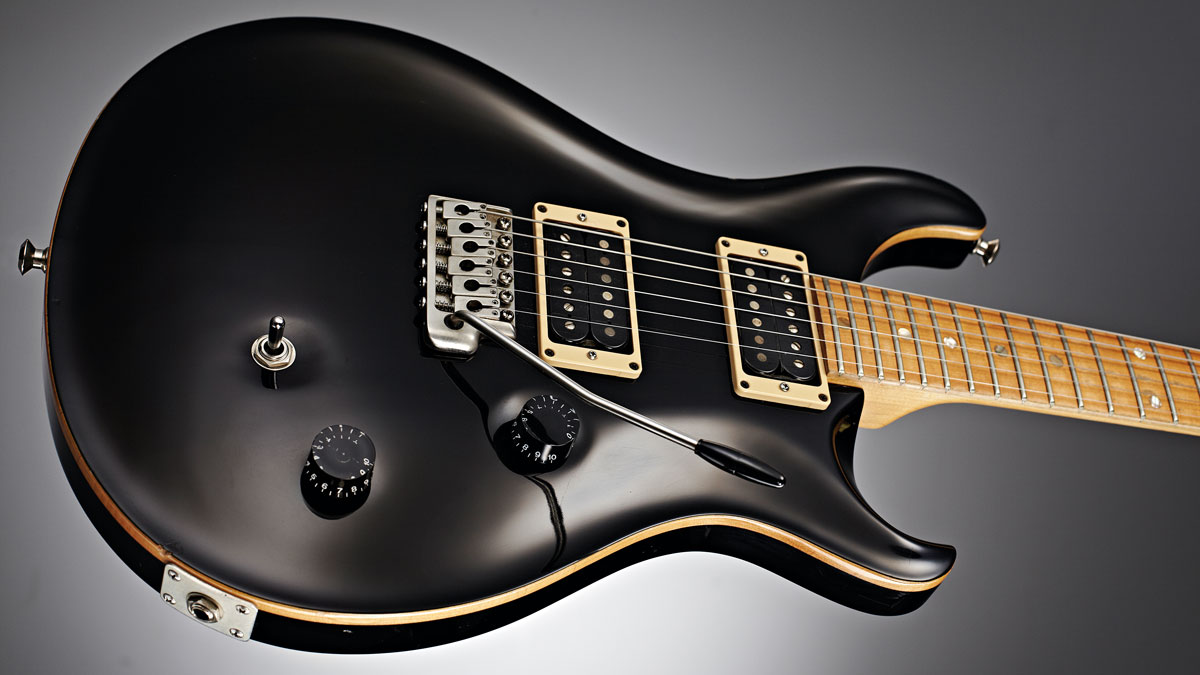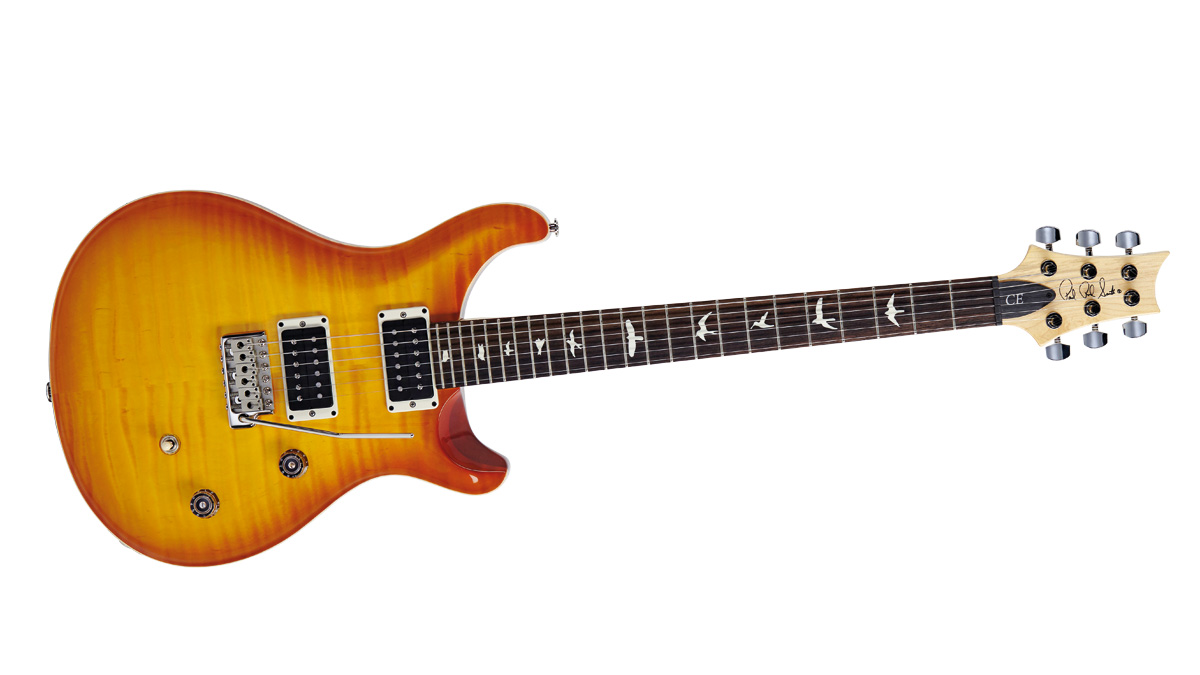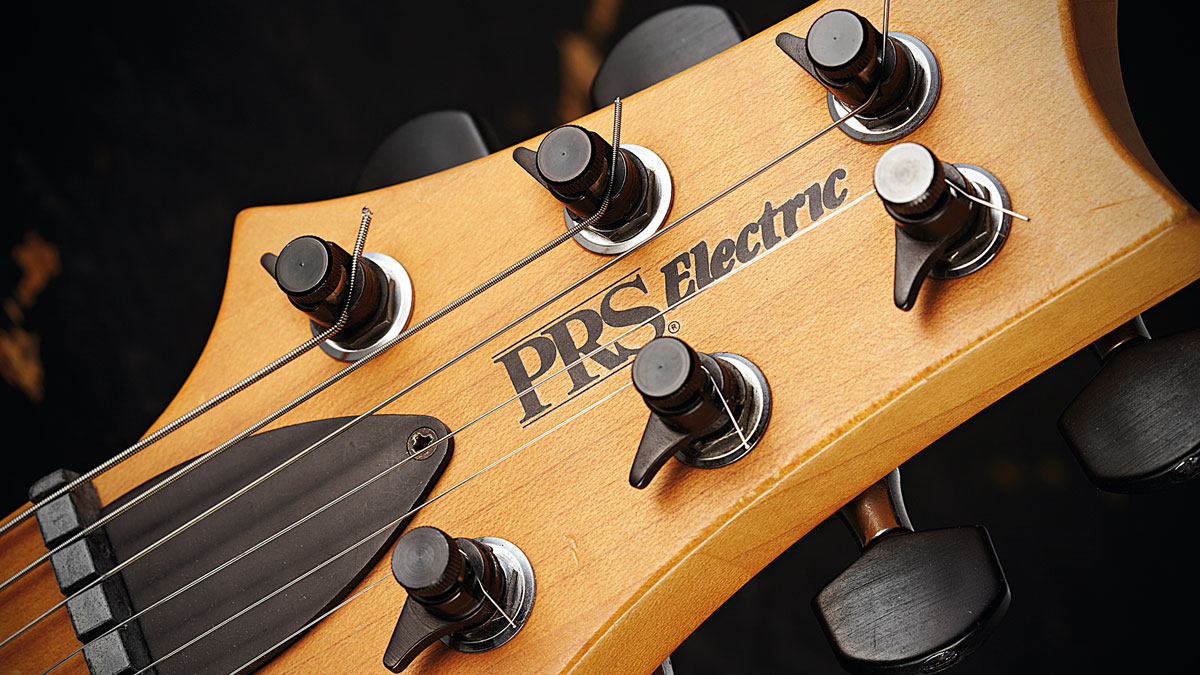
Introduction
It’s been a rocky road for the PRS CE from its debut in 1988 to its demise by 2009. What signals its return?
Back in autumn 2015, we got the heads up that PRS was planning a new and very “significant” guitar launch for the start of this year.
We figured out a way to make them in a different way - it simply offers a PRS to someone at a much lower price point
Expecting, perhaps, a new original design such as the Vela, which had surfaced 12 months before, we were a little surprised when we opened a shipping box and pulled our review model out from its gigbag: a CE, a model that first appeared 27 years ago.
“It’s the first pre-production prototype,” explained the head of PRS Europe, Gavin Mortimer. “I stole it from Jack’s office.”
Aside from the fact we were accepting stolen goods from PRS’s president, Jack Higginbotham, whom Paul Reed Smith was later to call the ‘bus driver’ in terms of his role in recreating this guitar, we honestly wondered why PRS had bothered to recreate this blast from the past.

The 2016 PRS CE 24
The answer, says Paul Reed Smith simply, is “because we’re now capable of making it at a pricepoint that we weren’t capable of before. We built the new [factory] building so we could make the S2 range and these [CEs].
“A building is a tool to do something and all this machinery is [a] tool, too. We have this very cool [S2] process where the S2 necks are made differently to the Core guitars, but are really straight. We figured out a way to make them in a different way - it simply offers a PRS to someone at a much lower price point.”

CE into the past
“You see, CEs always sold well,” he continues. “The problem was that in our old factory in Virginia Avenue - and before we developed the S2 process - it was difficult to be profitable when we made them. But we can do that now.
Before we developed the S2 process - it was difficult to be profitable when we made them. But we can do that now
“It’s not that I want to use the word ‘profitable’ in a review, but we did build the new factory building so that we had the capability to make instruments at these [S2 and CE] price points, but with that quality we’re known for. That’s why we did it.”
Paul Reed Smith might not want to mention the word profit in a guitar review, but, in reality, it’s crucial to the CE story, and indeed any previous pre-S2 attempt by PRS to build a more affordable guitar in the USA.
Whizz the clock back to the very early 1950s and it was Leo Fender who created the blueprint for the ‘bolt-on guitar’, with what became known as the Telecaster. Essentially two pieces of wood ‘bolted’ together with four machine screws, its modular construction was a lot less labour intensive than those ‘proper’ guitars made by the Gibson factory. And from that point on, a bolt-on guitar was always perceived to be cheaper than a set-neck instrument.
When PRS looked at creating a more affordable version of its maple-topped Custom and all-mahogany Standard, it’s little surprise therefore that the company chose a bolt-on design.

Price matters
The first CEs (still at that point called Classic Electrics) had a two-piece alder body that was more cost-effective compared to the Custom’s maple/mahogany body, and along with its nitro-finished maple neck and dot-inlaid fingerboard, created a guitar that was around 40 per cent cheaper, at USA cost.
The fact that it sounded very different, woodier and more ‘Fender-y’ than a Custom seems to have escaped its target market, which simply wanted a more affordable Custom.
Before we developed the S2 process - it was difficult to be profitable when we made them. But we can do that now
So, maple tops, rosewood fingerboards, bird inlays and, eventually, a switch from alder to mahogany for the back wood achieved that, but it also narrowed the price difference between the CE and the Custom closer to 20 per cent, a margin that pretty much defeated the whole original concept.
And it’s price over sound that again seems to have kickstarted the new CE - essentially a hybrid of the faster S2-style production and the full-blown Core range - not least with the increasing strength of the USA dollar, and, as Paul Reed Smith observes, a change in the end-user.
“Think about it. A lot of stores are full of Chinese imitations of what we loved as kids. Prices have dropped. We [PRS] were the people that brought it up. We got it over a £1,000, £2,000, £3,000, right?
“But things are very different now. Young people just aren’t spending that kind of money on guitars. They’re spending it on hand-held electronics and computers. We’re looking at very different times compared to when we first launched the CE. But like I say, that guitar always had merit. People who own CEs love them.”
This writer is certainly one of those CE lovers. Yes, it was always a more affordable PRS, but coming from the modding ‘superstrat’ generation, a bolt-on platform with humbuckers, single coils and vibrato, was ‘home’.
The CE - old and new - is pretty much exactly that. So, yes, it’s a cheaper guitar thanks to its new hybrid construction but it’s a guitar that also sounds different enough to a Core Custom to make it a more-than-valid choice. Vive la différence.
Read our full PRS CE 24 review
Guitarist is the longest established UK guitar magazine, offering gear reviews, artist interviews, techniques lessons and loads more, in print, on tablet and on smartphones
Digital: http://bit.ly/GuitaristiOS
If you love guitars, you'll love Guitarist. Find us in print, on Newsstand for iPad, iPhone and other digital readers


